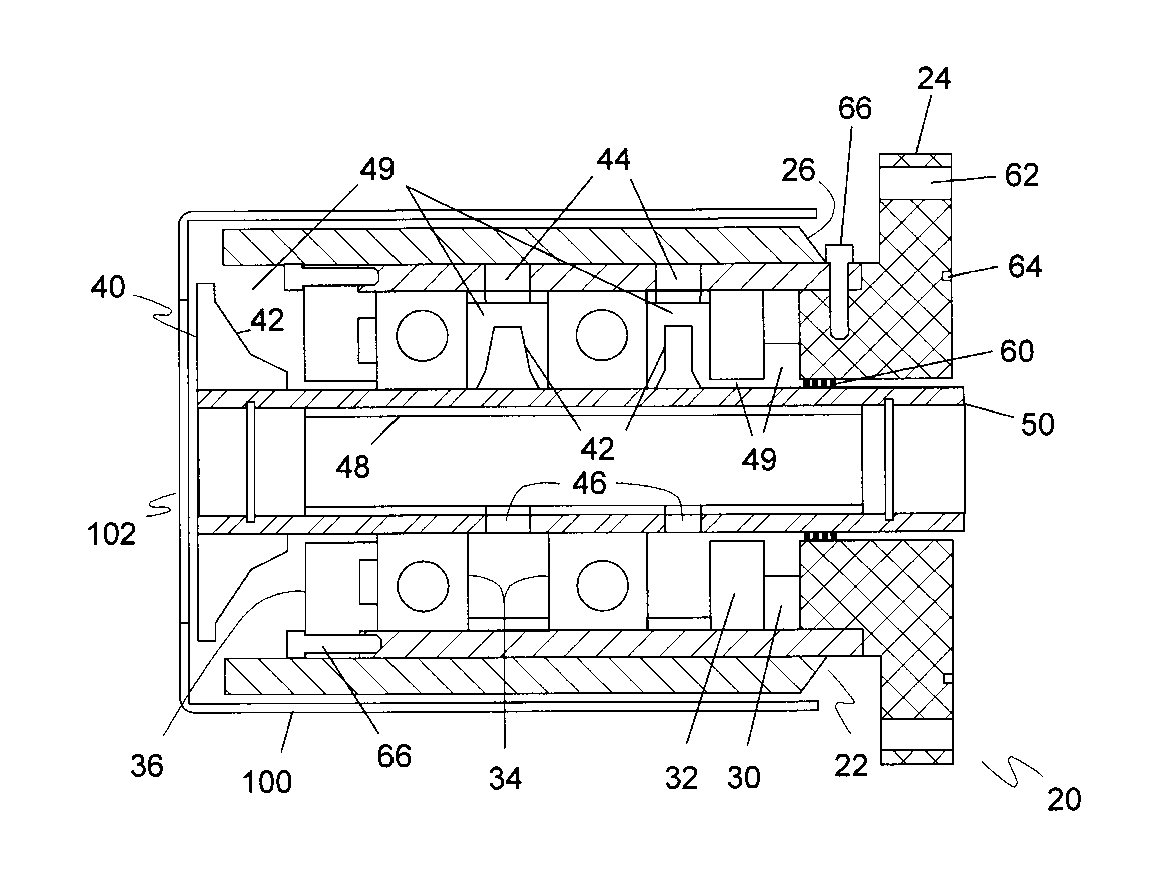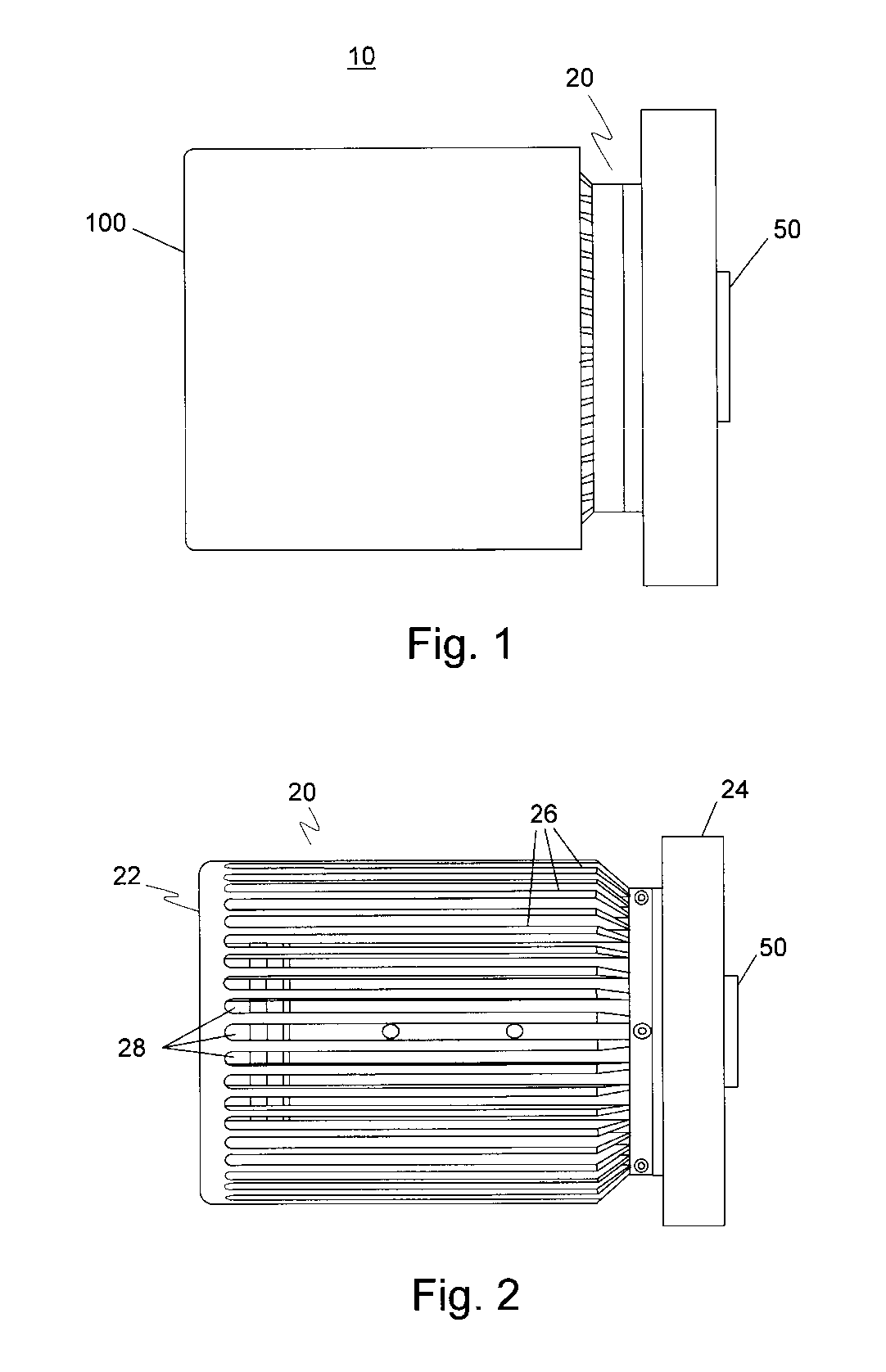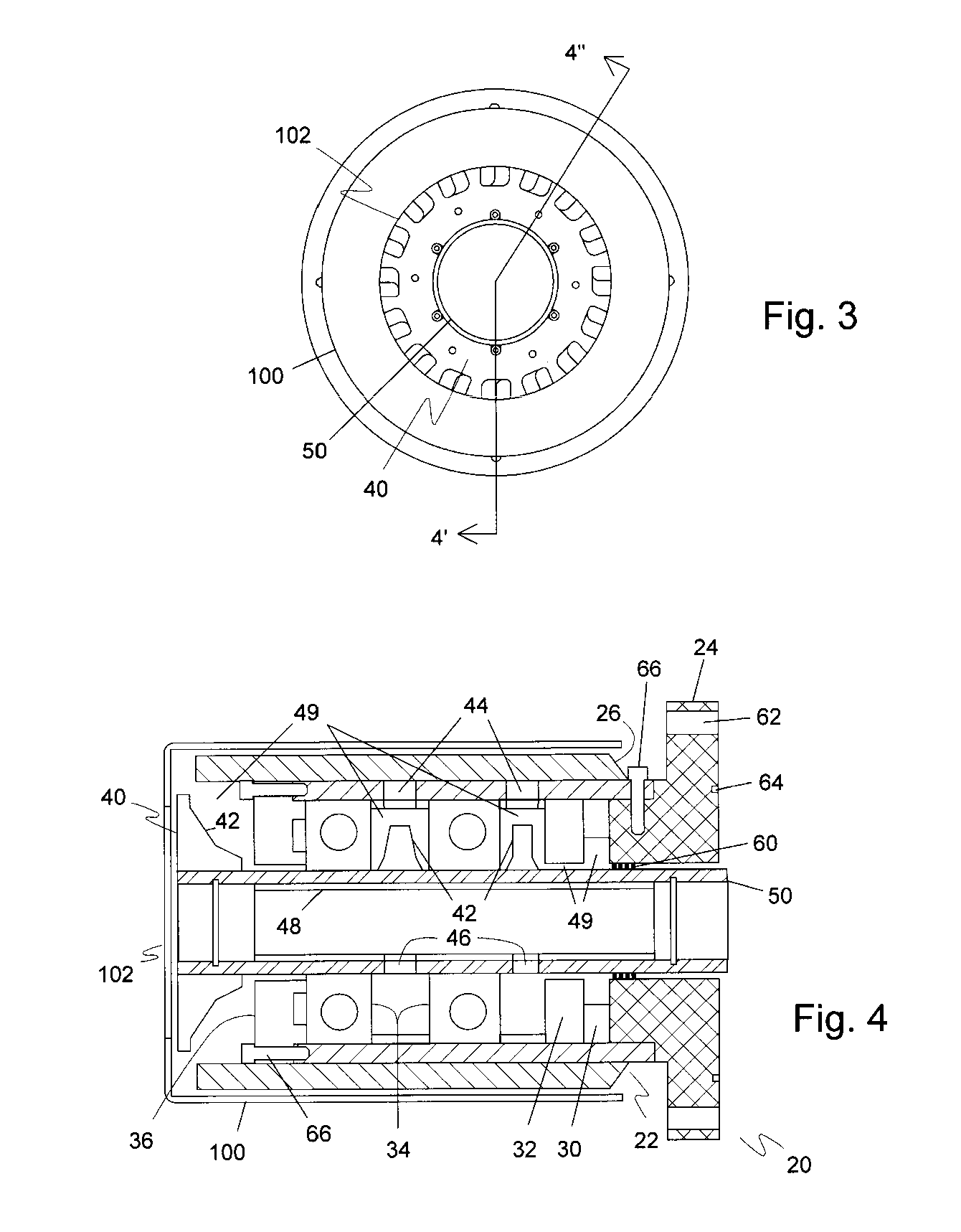Self-cooling ferrfluid seal
a technology of ferrofluid seals and seals, which is applied in the direction of sealing, engine seals, packaging, etc., can solve the problems of heat generation, inability to properly operate the seal, and limitations of each of the listed methods, so as to eliminate the potential for coolant leakage, effective heat flow paths and heat dissipation surfaces
- Summary
- Abstract
- Description
- Claims
- Application Information
AI Technical Summary
Benefits of technology
Problems solved by technology
Method used
Image
Examples
Embodiment Construction
[0025]The preferred embodiment of the present invention is illustrated in FIGS. 1-4. FIG. 1 illustrates an air-cooled, ferrofluid seal device 10. Ferrofluid seal device 10 includes a seal housing 20, a rotatable shaft 50 and an optional cover 100. Turning now to FIG. 2, there is illustrated seal housing 20 and rotatable shaft 50. Seal housing 20 includes a housing case 22 and a pole piece 24 securely attached to housing case 22. Housing case 22 is made of a heat conducting material, preferably copper, forming a good heat flow path for pole piece 24. Housing case 22 has a plurality of fins 26 and case vent channels 28. The plurality of fins 26 provides an effective heat dissipation surface.
[0026]FIG. 3 illustrates an end view of ferrofluid seal device 10 showing the rotatable shaft 50, cover 100 and cover end opening 102. Shaft end fan blade 40 is seen through cover end opening 102 securely attached to rotatable shaft 50. Line 40′-40″ indicates the cross-sectional view of ferrofluid ...
PUM
 Login to View More
Login to View More Abstract
Description
Claims
Application Information
 Login to View More
Login to View More - R&D
- Intellectual Property
- Life Sciences
- Materials
- Tech Scout
- Unparalleled Data Quality
- Higher Quality Content
- 60% Fewer Hallucinations
Browse by: Latest US Patents, China's latest patents, Technical Efficacy Thesaurus, Application Domain, Technology Topic, Popular Technical Reports.
© 2025 PatSnap. All rights reserved.Legal|Privacy policy|Modern Slavery Act Transparency Statement|Sitemap|About US| Contact US: help@patsnap.com



